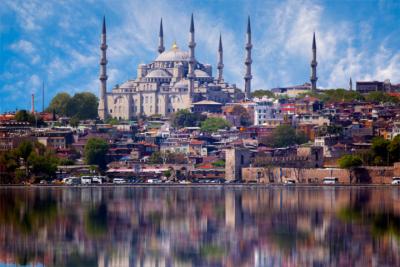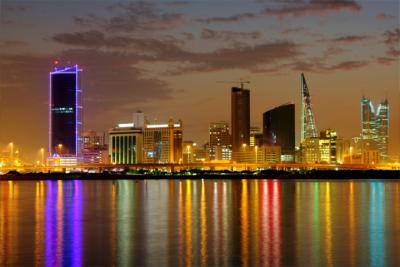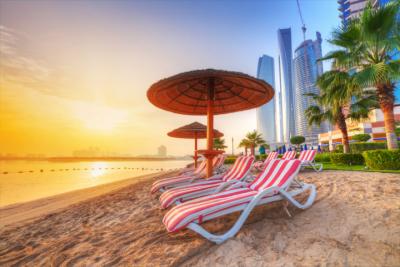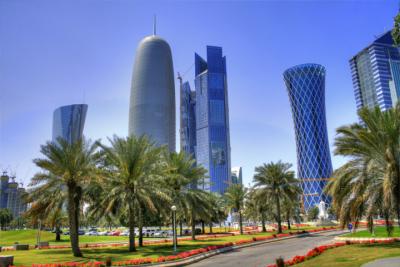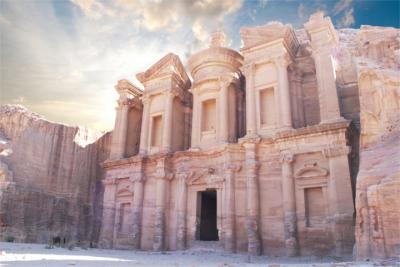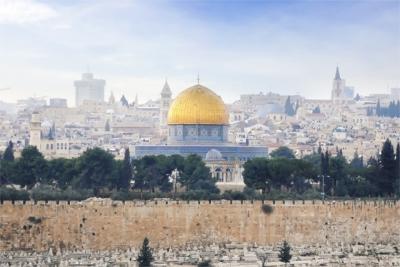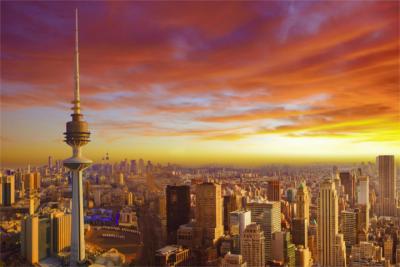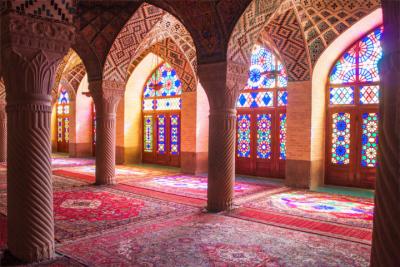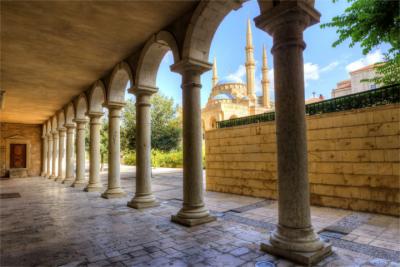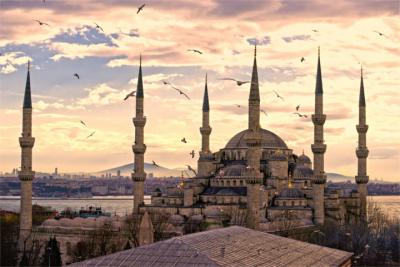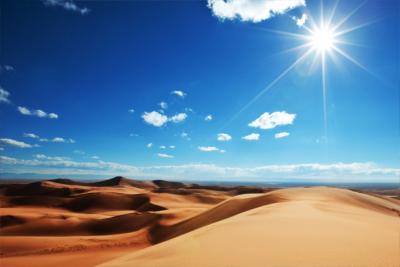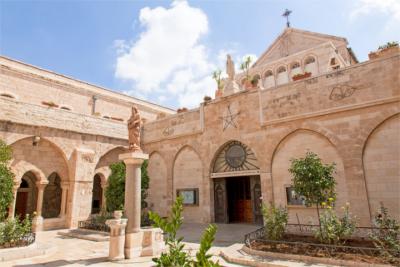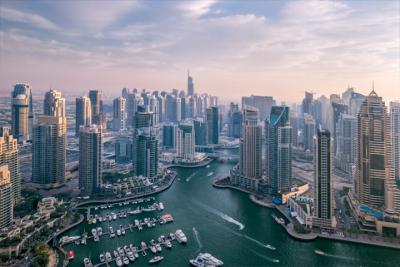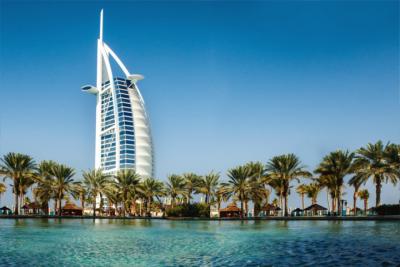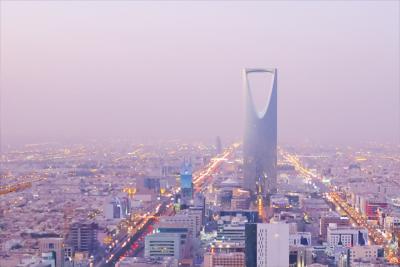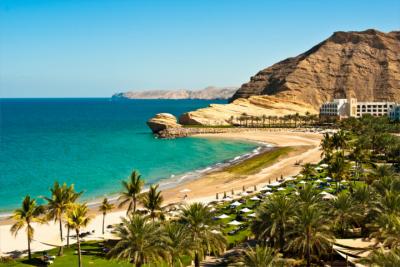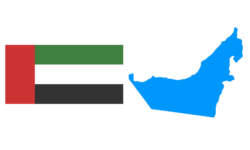Travel Offers
Travelmyne Featureprint
Distance
United Arab Emirates - Oriental Luxury in the Desert Sand
Gigantic skyscrapers rise up into the blue sky and fascinating islands appear out of thin air in the Persian Gulf - the United Arab Emirates show their wealth by carrying out spectacular construction projects and have still kept their oriental charm.
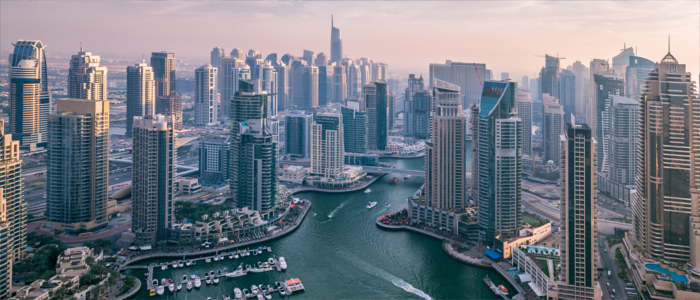
Geography - The hot desert country at the Persian Gulf
Die United Arab Emirates lie in the south-east of the Arabian Peninsula at the Persian Gulf. They border on Oman in the east and on Saudi Arabia in the south and west. The country consists of seven sheikdoms, i.e. emirates: Abu Dhabi, Dubai, Sharja, Ajman, Fujairah, Umm al-Quwain and Ras al-Khaimah. Dubai and the capital Abu Dhabi are the biggest and most important cities. The climate is subtropical to tropical. While the desert climate is very hot and dry, it is hot and humid at the coasts. The amount of precipitation per year is only 100 millimetres but most of the rain evaporates in the air before it even reaches the ground.

Nature - The desert in front of the sea
Over two thirds of the country's area consist of deserts. Part of the Arab sandy desert Rub' Al Khali is located in the Emirates. The gigantic shifting sand dunes frequently threaten the cities and can only be forced back by elaborate planting of vegetation. Between the sandy desert and the coast you see a salt pan, which is about 15 kilometres wide. Less than three percent of the country's land can be used for agriculture. There is a number of oases in the barren desert such as the Al Ain and the Liwa Oasis. They are vegetated by acacias, date trees and eucalyptus trees. Many oases, canals and parks were artificially arranged in the big cities. There are numerous islands and corals in front of the coast. The highest peak is the mountain Jabal Yibir (1,527 m) in Ru'us al Jibal. The region's fauna is extremely poor in species. However, falconry has developed into a significant leisure activity in the Emirates.

Natural sights - In the freshness of the oasis
The beaches in the Emirates are especially worth visiting in the winter months when it is not as hot. Particularly beautiful examples are the beach on Saadiyat Island near Abu Dhabi, Jumeirah Beach in Dubai and the beach in Ras al Khaimah. A trip into the dunes in Dubai's hinterland is also a good idea. The Liwa Oasis in the great sandy desert consists of almost 40 small villages and forms a green contrast to the dusty dunes of the desert. It is an excellent starting point for exciting desert safaris.
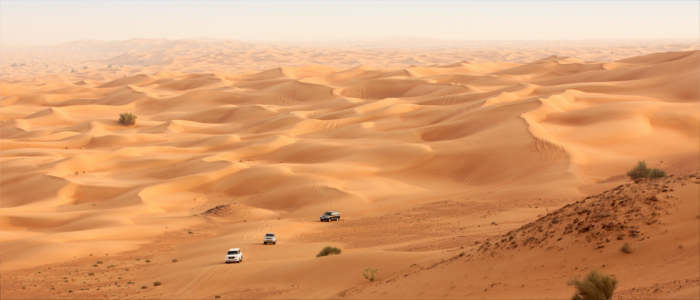
Culture - The luck of the prospectors
Only one percent of the country's area is populated but the level of urbanisation amounts to unbelievable 87 percent. Only one quarter of the population are native Emiratis. Most other inhabitants are migrant workers. Only a few decades ago, the Emirates were populated by poor fishermen, pearl divers and nomadic tribes who roamed the deserts. Only five of the original ten percent of nomads are left today. The great change was caused by the oil boom in the 1970s. It is now known that the Emirates own over ten percent of the world's oil reserves. This unexpected resource has made the country rich. The standard of living increased extremely in a minimum of time. Today it is natural that every citizen is granted the right of free housing space, water, electricity and a pension. About 96 percent of the population are Muslims. Therefore, it is not surprising that one of the greatest mosques on earth is located in the Emirates: the Sheikh Zayed Mosque. Although the Emirates have a more liberal attitude towards alcohol and nightlife than Saudi Arabia, for example, visitors should respect and adhere to the country's ways and customs.
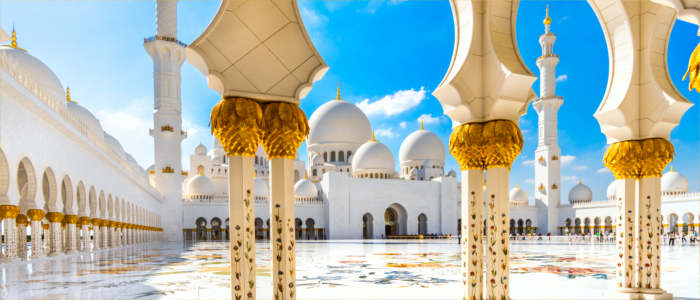
Cultural sights - Oriental architecture
Travellers who are looking for old architecture will not find much in the Emirates. There are hardly any buildings which are older than 30 years, especially in the big cities. The capital Abu Dhabi has existed since 1761 and until 60 years ago it only held small huts belonging to pearl divers. Now it is one of the most modern cities worldwide and by far the richest of the seven emirates. More impressive, bigger and more crowded is the metropolis Dubai. Gigantic skyscrapers and colossal construction projects like the Burj Al Arab, Burj Khalifa, the Palm Islands or Ferrari World have brought the desert cities fame all over the world. Dubai is also a very young city and offers a variety of leisure activities. The movements of the Dubai fountains, the Dubai Museum and the Dubai Aquarium & Underwater Zoo are worth a visit, especially on hot days. The UNESCO was most of all interested in the old buildings and declared Al Ain a Cultural Heritage site in 2011.
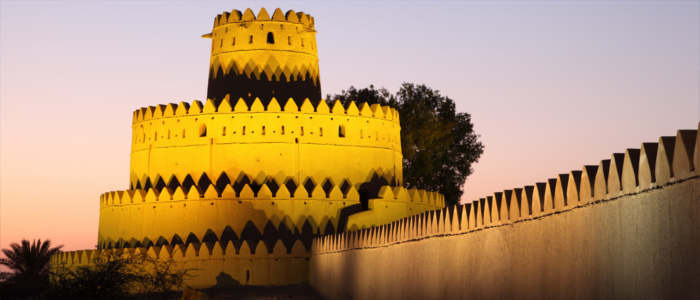
Experience - The gold market in Dubai
The Emirates are a shopping paradise. New huge and impressive malls, which are trying to surpass one another, open regularly and present a pleasant air-conditioned place in which visitors can cool down. Particularly worthwhile examples are the Dubai Mall and the Mall of Emirates in Dubai as well as the Marina Mall in Abu Dhabi. Especially clothes and electronics have reasonable prices here. Dubai's legendary gold souk reminds of the region's smuggling past. Over 300 jewellers display their valuable treasures on the greatest Arab market. The spice and camel markets in Al Ain or the fish market in Abu Dhabi are also characteristic of the Arab region. Especially the two metropolises offer visitors an exciting nightlife with both oriental and international delicacies in the restaurants, bars and discos. Spices, honey, almonds and pistachios play a major role in the local cuisine. Tourists had better drink a glass of chai (tea) in the hot sun than alcohol.

Activities - Action and adventure in the desert cities
If you think there is nothing to do in the desert, you are wrong - at least as long as you are in the United Arab Emirates. Parasailing, sailing trips, water skiing, banana boat trips, bodyboarding and windsurfing - all these and many other water sports are offered in the coastal towns. Even white-water rafting in the Wadi Adventure Park is possible. Many hotels offer deep-sea fishing in the Gulf for leisure and professional fishers. Divers should visit the Emirates in the winter months because visibility is better at that time and they will be able to spot turtles, clownfish and barracudas. Motorsport fans will lose their hearts in the Emirates. They learn all about their favourite racing sport in the Ferrari World and can take a ride on the fastest roller coaster Formula Rossa afterwards. Other worthwhile leisure parks are the Adventureland Sharjah and the Stargate Dubai. Travellers do not even have to go without skiing in the desert state as they can visit the Ski Dubai Snow Park.
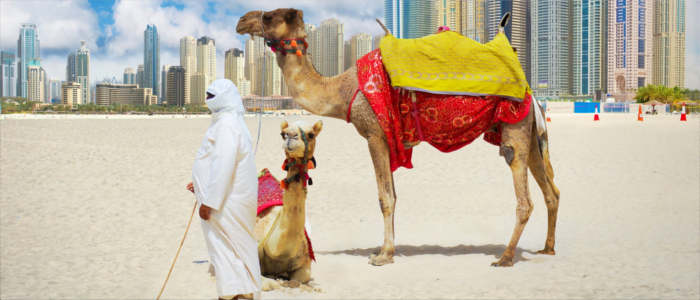
Information
The best time for travelling the Emirates is from November to April when it is not as hot. Visitors have to adapt to temperatures of over 40 °C in the summer months. Before setting on their journey, travellers should inform themselves about the country's criminal regulations, especially with regard to alcohol, taking photos of public buildings, the exchange of affection and comments on the topics of faith and religion. All these actions may be punished severely.
The United Arab Emirates combine the magic of One Thousand and One Nights with the most modern city architecture on earth. The cities are excellent destinations for shopping trips and active holidaymakers find a wide range of attractive leisure activities.

